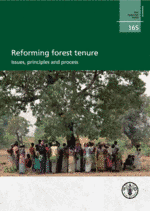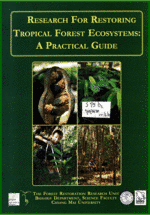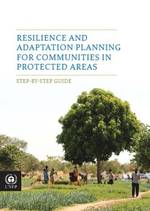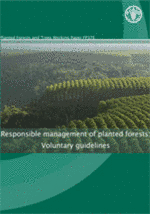الأدوات
الأداة هي مصدر يوظف لدعم تنفيذ الإدارة المستدامة للغابات وتوجيهها. ويشتمل هذا القسم على جميع الأدوات المتاحة في مجموعة أدوات لإدارة المستدامة للغابات التي قد تكون على شكل إصدارات أو مقاطع فيديو حول التعلم الإلكتروني أو برمجيات وما إلى ذلك.
بوسعكم تصفح "الأدوات" من خلال كتابة كلمات أساسية في مربع البحث المجاني أو بإمكانكم تضييق نطاق البحث باستخدام فلاتر موجودة على الجانب الأيمن من الصفحة.
This publication represent an analysis of experiences in tenure and tenure reform which suggests that the interactions among tenure, regulatory frameworks and governance are critical in determining the extent to which forest management objectives are achieved. The results of studies carried out over a wide geographical area highlighted several other...
Large areas of the world's forests have been lost or degraded and landscapes everywhere are being simplified by current land-use practices. In this publication, Lamb and Gilmour present approaches to restoring and rehabilitating the vast areas of degraded, fragmented and modified forests which cover much of the world. They argue...
This reference compiles studies on classification and treatment to rehabilitate logged-over forest in Asia.
The objective is to design, test and develop a practical methodology for classification of logged-over forests into different rehabilitation categories. To this end, the classification is approached from the perspective of foresters who plan and manage rehabilitation...
The International Expert Consultation on Non-Wood Forest Products had the following objectives:
- to gain better insight into the problems and issues to be addressed and the potentials for developing NWFPs in an environmentally sound manner;
- to identify and propose priorities for action in promoting development of NWFPs, taking into consideration...
Around the world, many attempts to “re-create natural” forest ecosystems on deforested land have failed. This has often been due to poorly developed techniques, as well as poor management and failure to engage local people. However, this need not be the case. This book sets out to show how successful...
This guide provides the practical tools needed to effectively engage with communities living in, and around PAs, regarding appropriate strategies to deal with the negative impacts of climate change. This manual outlines a practical and pragmatic community-based resilience and adaptation planning process, offering step-by-step guidance on initiating the planning process,...
Focusing on freshwater systems, this course inspires managers, scientists, and community members to work across disciplines and watersheds. The course coaches learners to understand, monitor, and manage watersheds as integrated systems. Lessons begin with watershed function and then focus on forests, freshwater, and fisheries. In each case emphasizing interlinkages, spatial...
The purpose of this publication is to raise awareness on the importance of accurate and precise resource assessments at all levels of forest use for NWFPs, and to provide guidance on the design and selection of appropriate methods for resource quantification in different situations and for different products. It does...
The Voluntary Guidelines on Governance of Tenure state that responsible investments should do no harm, and safeguard against dispossession of legitimate tenure right holders. They also embody international legal provisions requiring the Free, Prior and Informed Consent (FPIC) from Indigenous Peoples to any project that may affect them. This course...
The voluntary guidelines have been derived through an extensive multistakeholder process coordinated by FAO over a period of two years which involved experts in planted forests from governments, the private sector (corporate and smallholder), non-governmental (social and environmental) and intergovernmental organizations and academics. The process identified critical niches for a...










